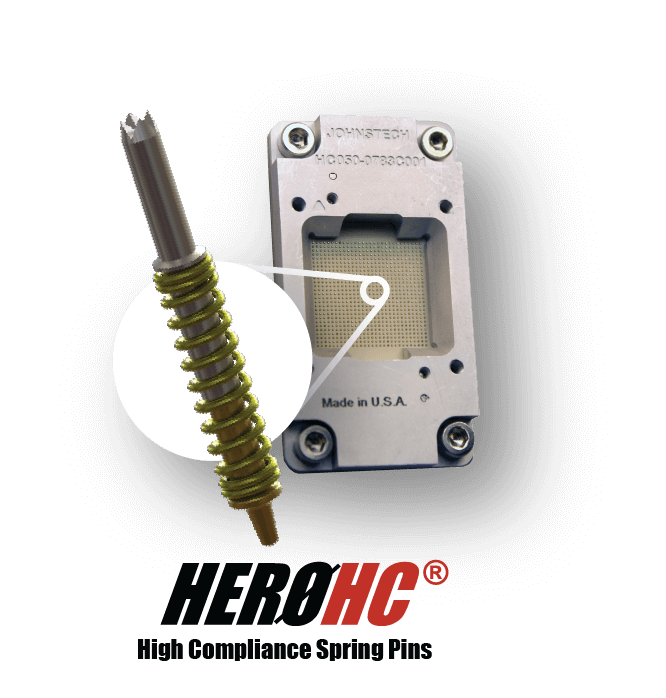Power Management
Test sockets for power management ICs (PMICs) play a crucial role in ensuring reliable electrical contact during testing while accommodating the thermal and power-handling requirements of these ICs.
Important Specifications
- Current and Voltage Rating
- PMICs often handle high current (>10A), so sockets must have low resistance contacts to minimize power loss and heating.
- Voltage ratings should match or exceed the IC’s operating voltage.
- Contact Resistance
- Low resistance (<50 mΩ) ensures minimal voltage drop and power loss.
- Consistency over repeated insertions is critical.
- Thermal Performance
- The socket material and design should support heat dissipation to prevent thermal damage.
- Some high-power applications require sockets with integrated cooling solutions.
- Pin Count and Pitch
- Must match the IC’s footprint (e.g., BGA, QFN, LGA, or custom packages).
- Fine-pitch designs (<0.5mm) require precision engineering to avoid signal integrity issues.
- Signal Integrity
- For high-frequency PMICs, the socket should have minimal parasitic inductance and capacitance.
- RF shielding may be necessary for noise-sensitive applications.
- Durability and Insertion Cycles
- Should withstand thousands to millions of cycles, depending on usage (engineering validation vs. mass production test).
- Material and Contact Technology
- Spring pins (pogo pins), elastomeric connectors, or micro-coaxial structures can be used.
- Materials like beryllium copper or gold-plated contacts improve conductivity and longevity.

reliable electrical contact during testing
